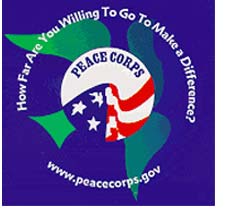Peace Corps Safety Measures: Making up for Past Mistakes?

On December 21 2011, the U.S. Peace Corps released a statement declaring that it would be pulling out 158 active volunteers from Honduras in January 2012 as a result of the ongoing violence there perpetrated by organized criminal gangs. Furthermore, the Peace Corps intends to reevaluate the safety situation for volunteers serving in other Central American countries – Guatemala and El Salvador, and have canceled the upcoming 2012 training sessions that were to be held in the aforementioned countries. This security measure was not unprecedented in the past, since, according to the New York Times article, according to a Peace Corps spokesperson, Kristina Edmunson, speaking from her Washington D.C. office, said that “from time to time, the corps withdraws or restricts work in the 75 countries in which it has volunteers.” It has been reported that dozens of current Peace Corps volunteers have been injured after being caught in the line of fire amidst the violence that has plagued the Central American nations with the rise of illicit drug trafficking.
The situations in Honduras and in El Salvador have struck a particularly ominous chord with the Peace Corps as they have been deemed the most violent countries in the world due to presently having “the highest homicide rates in the world with 82.1 and 66 per 100,000 inhabitants, respectively, in 2010,” as compared with Guatemala which “had a rate of 41 per 100,000 last year” according to a recent report released by the United Nations. One must wonder why all three countries have “more than double the homicide rate of 18 per 100,000 in Mexico, where drug violence has drawn world attention.” For Honduras, it could be the result of the unstable political environment that has generated pandemonium and violence since 2009 when leftist President Manuel Zelaya was ousted in a controversial coup, resulting in the killing of numerous journalists, labor activists, and gays at a disturbing rate for a country that did not share the typical Central American penchant for violence.
“Due to ongoing security concerns, the agency is enhancing operational support to currently serving volunteers in these countries” as, in a public statement made by Director Aaron Williams, “The safety and security of all Peace Corps volunteers is the agency’s highest priority.”
However, this sentiment does not address the question of contentious Peace Corps security measures, or lack thereof, in the past, particularly regarding the issue of the rape of volunteers around the globe. In an ABC News’ 20/20 interview, Karestan Koenen, came forward about being raped during her Niger 1991 service, where, upon her return, was told by the Peace Corps that it was fundamentally her fault. Tragically, the situation has not changed much today, with multiple women coming forward about similar traumas associated in their lives. According to the 20/20 reports, “more than 1,000 young American women have been raped or sexually assaulted in the last decade while serving as Peace Corps volunteers in foreign countries with little or no support from the Peace Corps organization. Sexual assault is not the only area in which the organization has not done much for their victimized volunteers; Kate Puzey was killed due to the release of her identity within the Peace Corps. Puzey had made a complaint to the organization after hearing that a former volunteer in her village was sexually assaulting students. This case should also be looked at as an issue of security, with volatile information being leaked within the Peace Corps’ bureaucracy, a master breach of privacy which ended up in a volunteer’s death.
Why has the Peace Corps neglected to properly address these issues, and not give them the same attention as they are now doing with respect to gang-related drug violence?
It is important that the Peace Corps examine all situations that threaten the security of its personnel and not abandon them in their time of greatest need if they want to continue President Kennedy’s vision. Peace Corps managers have much to discuss concerning issues of personnel and curriculum, but no issues have a more urgent location on its agenda than the sexual safety of volunteers. Peace Corps needs to end their “blame the victim” approach and focus on the recovery of their volunteers.
In a recent Council on Hemispheric Affairs (COHA) email inquiry about sexual safety matters, a Peace Corps representative reiterated that safety is their number one priority and attached a link to the “Commitment to Sexual Assault Victims.” This document appears to be more like a collection of general ideals rather than a detailed and concrete set of policies, actions, and objectives. Although no one can foresee all possible crises, one can learn from past mistakes.

